
Writer
Ulrike Ottinger weaves her personal memories of Parisian bohemianism and the serious social, political and cultural upheavals of the time into a cinematic “figure poem.”

Director
Ulrike Ottinger weaves her personal memories of Parisian bohemianism and the serious social, political and cultural upheavals of the time into a cinematic “figure poem.”

Director
Tabu, a mythical tale shot in Tahiti, is yet another key to Ottinger’s cinema. Aloha is a dedication to Murnau, as well as Gauguin, Matisse and her other predecessors whose hearts and eyes had been enchanted by foreign cultures. By juxtaposing footage and outtakes from Tabu with scenes from her own films, the director creates a dialogue between fictional universes separated by time and space. A fish is caught by islanders in 1931 and eaten by pirates in Madame X forty years later. What is this film if not an ironic commentary on artistic legacy and succession?

Right at the heart of the debates on the discrimination of women in the film industry, this documentary raises questions, while offering a voice to women and their cinema. Catherine Breillat, Claire Denis, Mira Nair, Margarethe Von Trotta, Ulrike Ottinger, Micheline Lanctot, Rakshnan Bani-Etemad, María Novaro but also the names of the less visible directors of the general public. Joining the filmmakers are the voices and comments of producers, film specialists and archivists through whom our images are meticulously preserved.

Director of Photography
It starts with "Peter Schlemihl's Miraculous Story", which tells of a man travelling the world in seven-league boots. Adelbert von Chamisso wrote the tale before setting off to Russia on scientific expedition in 1815. He analysed the flora of Alaska and then explored the Northwest Passage, just like Cook and voyager Bering had done previously, the latter with physician and naturalist Steller in tow. A porthole reveals the view. Thus begins Ottinger's journey from Alaska to Kamchatka via Chukotka, with her predecessors’ log books to accompany her on her way.

Writer
It starts with "Peter Schlemihl's Miraculous Story", which tells of a man travelling the world in seven-league boots. Adelbert von Chamisso wrote the tale before setting off to Russia on scientific expedition in 1815. He analysed the flora of Alaska and then explored the Northwest Passage, just like Cook and voyager Bering had done previously, the latter with physician and naturalist Steller in tow. A porthole reveals the view. Thus begins Ottinger's journey from Alaska to Kamchatka via Chukotka, with her predecessors’ log books to accompany her on her way.

Herself (voice)
It starts with "Peter Schlemihl's Miraculous Story", which tells of a man travelling the world in seven-league boots. Adelbert von Chamisso wrote the tale before setting off to Russia on scientific expedition in 1815. He analysed the flora of Alaska and then explored the Northwest Passage, just like Cook and voyager Bering had done previously, the latter with physician and naturalist Steller in tow. A porthole reveals the view. Thus begins Ottinger's journey from Alaska to Kamchatka via Chukotka, with her predecessors’ log books to accompany her on her way.

Director
It starts with "Peter Schlemihl's Miraculous Story", which tells of a man travelling the world in seven-league boots. Adelbert von Chamisso wrote the tale before setting off to Russia on scientific expedition in 1815. He analysed the flora of Alaska and then explored the Northwest Passage, just like Cook and voyager Bering had done previously, the latter with physician and naturalist Steller in tow. A porthole reveals the view. Thus begins Ottinger's journey from Alaska to Kamchatka via Chukotka, with her predecessors’ log books to accompany her on her way.

Herself
Ulrike Ottinger is an exceptional filmmaker and artist. Her cinematic universe has influenced entire generations. As a young woman, she brought the international art world to the sleepy town of Konstanz. It all began on the shores of Lake Constance where Ulrike Ottinger was born and where she still often spends time. Filmmaker Brigitte Kramer chose to begin her film at Lake Constance since she too shares Ottinger’s birthplace and a great love of these waters. This is also where the filmmaker’s own artistic development began, not least as a result of her encounter with Ottinger and her work. Other fellow travellers and friends appearing in this film include art historian Katharina Sykora, collector and curator Ingvild Goetz, film historian Ulrich Gregor, philosopher Bernd Scherer and actor Irm Hermann. Using this common ground as a starting point for an exploration of Ottinger’s substantial oeuvre, this documentary provides a keen insight into the artist’s life and work.

Self
Gérard Courant's "Filmed Diary" of December 14, 2011, produced in Dubai (United Arab Emirates). Between December 7 and 15, 2011, Gérard Courant was invited by the Dubai International Film Festival, in the United Arab Emirates. It was an opportunity for him to film many "Cinematons" of personalities from the Arab world and to continue his "Film Notebooks" from which he brought back 7 episodes.

Producer
In Echigo in Japan the snow often lies several feet deep well into May covering landscape and villages. Over the centuries the inhabitants have organised their lives accordingly. In order to record their very distinctive forms of everyday life, their festivals and religious rituals Ulrike Ottinger journeyed to the mythical snow country – accompanied by two Kabuki performers. Taking the parts of the students Takeo and Mako they follow in the footsteps of Bokushi Suzuki who in the mid-19th century wrote his remarkable book “Snow Country Tales”.

Cinematography
In Echigo in Japan the snow often lies several feet deep well into May covering landscape and villages. Over the centuries the inhabitants have organised their lives accordingly. In order to record their very distinctive forms of everyday life, their festivals and religious rituals Ulrike Ottinger journeyed to the mythical snow country – accompanied by two Kabuki performers. Taking the parts of the students Takeo and Mako they follow in the footsteps of Bokushi Suzuki who in the mid-19th century wrote his remarkable book “Snow Country Tales”.

Writer
In Echigo in Japan the snow often lies several feet deep well into May covering landscape and villages. Over the centuries the inhabitants have organised their lives accordingly. In order to record their very distinctive forms of everyday life, their festivals and religious rituals Ulrike Ottinger journeyed to the mythical snow country – accompanied by two Kabuki performers. Taking the parts of the students Takeo and Mako they follow in the footsteps of Bokushi Suzuki who in the mid-19th century wrote his remarkable book “Snow Country Tales”.

Director
In Echigo in Japan the snow often lies several feet deep well into May covering landscape and villages. Over the centuries the inhabitants have organised their lives accordingly. In order to record their very distinctive forms of everyday life, their festivals and religious rituals Ulrike Ottinger journeyed to the mythical snow country – accompanied by two Kabuki performers. Taking the parts of the students Takeo and Mako they follow in the footsteps of Bokushi Suzuki who in the mid-19th century wrote his remarkable book “Snow Country Tales”.

Director
Still Moving is one of the director’s most personal films, offering some insight into her artistic process. It is an assemblage of her father’s African collection, photographs made by Ottinger in the 1970s, footage of a theatre play based on Johann Nestroy and a rare artefact: an 8mm film document of Lil Picard’s birthday celebration—an artist who mingled with the Dadaists and Warhol’s Factory alike. It is an exhibition in the form of a film, a dedication to an adventurer father, a secret art museum, a cabinet of wonder: a whole universe on its own. Welcome to the Little Theatre of Ulrike Ottinger!

Director
Ulrike Ottinger’s provocative mélange of ethnography, stunning tableaux and baroque vignettes was inspired by what she calls the “well-stocked miracle” of Korean wedding chests, assembled according to time-honored customs. This exploration of love and marriage in South Korea looks closely at ancient and present-day rituals, revealing what is old in the new and new in the old. Her inquiry leads us from shamans, temples and priests, to the enchanted maze of 21st-century Seoul, where vendors of medicinal herbs co-exist with high-tech beauty salons for wedding couples and secular marriage palaces. Using film much like a canvas, Ottinger creates a modern fairytale flush with mythological heroes, traditional rites, ancestral symbolism, dreams of eternal love, and a whole lot of Western kitsch. One of her most acclaimed documentaries, it captures the amazing phenomenon of new mega-cities and their contradictory societies caught in a balancing act.

Cinematography
Ulrike Ottinger’s documentary Prater (Austria-Germany), a half-decade in the making, chronicles over the past century and more the attractions that contributed to the rise and fall of Prater, the world’s oldest amusement park.

Co-Producer
Ulrike Ottinger’s documentary Prater (Austria-Germany), a half-decade in the making, chronicles over the past century and more the attractions that contributed to the rise and fall of Prater, the world’s oldest amusement park.

Writer
Ulrike Ottinger’s documentary Prater (Austria-Germany), a half-decade in the making, chronicles over the past century and more the attractions that contributed to the rise and fall of Prater, the world’s oldest amusement park.

Director
Ulrike Ottinger’s documentary Prater (Austria-Germany), a half-decade in the making, chronicles over the past century and more the attractions that contributed to the rise and fall of Prater, the world’s oldest amusement park.

Editor
The film TWELVE CHAIRS linked in a spectacular way the dramaturgy of a treasure hunt and chase with a dense imagery of people and places. It tells both of yesterday and today, the reality of the people in the CIS countries and the universal humanity of our own actions. Large social utopia thus mixes with the individual hope of personal happiness, be it through money or in love.

Director of Photography
The film TWELVE CHAIRS linked in a spectacular way the dramaturgy of a treasure hunt and chase with a dense imagery of people and places. It tells both of yesterday and today, the reality of the people in the CIS countries and the universal humanity of our own actions. Large social utopia thus mixes with the individual hope of personal happiness, be it through money or in love.

Writer
The film TWELVE CHAIRS linked in a spectacular way the dramaturgy of a treasure hunt and chase with a dense imagery of people and places. It tells both of yesterday and today, the reality of the people in the CIS countries and the universal humanity of our own actions. Large social utopia thus mixes with the individual hope of personal happiness, be it through money or in love.

Director
The film TWELVE CHAIRS linked in a spectacular way the dramaturgy of a treasure hunt and chase with a dense imagery of people and places. It tells both of yesterday and today, the reality of the people in the CIS countries and the universal humanity of our own actions. Large social utopia thus mixes with the individual hope of personal happiness, be it through money or in love.

Director
Ottinger had been attracted to Jewish culture and its intrinsic nomadism since the late 1980s. His unrealized fiction film Diamond Dance was intended to be “a love letter to the Jewish communities of New York” and a “saga of wandering diamonds and wandering Jews”. Low budget and small in size, Esther is an echo of this ambitious concept that goes back to the classical religious parable. The narration is by the famous Hungarian writer György Konrád and the non-fictional dimension is introduced by non-professional interpreters: immigrants from Eastern Europe, including Russian Jews.

Director
“Places and worlds beyond the interest of the media are at the mercy of the law of forgetting. The spotlight fades and that which urgently needs public attention lies in the dark: poverty, hopelessness, and the population's fear in the face of terror from the state or from gangs, of Mafia-like business practices and paramilitary despotism.This is not a journey to a far-off land, outside of our cultural circle; it takes place along the old transport and trade routes through the decaying empires of southeast Europe. The images collected at the side of the road distill something essential from a number of small but significant observations: the coincidence of the lack of coincidence in living conditions.”
Ulrike Ottinger

Director
When, before the revolution, accidentally arrested, the philistine - a tsarist civil servant of high status - falls in deep, lethargic sleep. 20 years later he wakes up and finds himself in a post-revolutionary, still young Soviet Union. He is stunned. He is shocked. But a philistine always finds his way.

Director
Six life stories of German, Austrian and Russian Jews which intersect in exile in Shanghai.

Writer
The Darkhad and Soyon Uriyanghai peoples live in a vast valley in Northern Mongolia, much as their ancestors have for centuries. "Taiga" is the record of a long period spent by the German filmmaker Ulrike Ottinger among these people.

Director
The Darkhad and Soyon Uriyanghai peoples live in a vast valley in Northern Mongolia, much as their ancestors have for centuries. "Taiga" is the record of a long period spent by the German filmmaker Ulrike Ottinger among these people.

Writer
A document of the 10 days - in 1990 - leading up to the unification of the two German currencies.

Director
A document of the 10 days - in 1990 - leading up to the unification of the two German currencies.
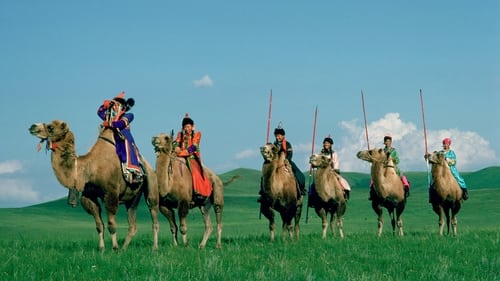
Director of Photography
A group of cosmopolitan women passengers aboard the Trans-Siberian/Mongolian Railway are taken prisoner by Ulan Iga, a warrior princess.

Writer
A group of cosmopolitan women passengers aboard the Trans-Siberian/Mongolian Railway are taken prisoner by Ulan Iga, a warrior princess.

Director
A group of cosmopolitan women passengers aboard the Trans-Siberian/Mongolian Railway are taken prisoner by Ulan Iga, a warrior princess.

Director of Photography
Pride is the first of the seven deadly sins. The introduction is made through early allegorical forms and figures (triumphal procession, dance of death, Baroque tragedy etc.) The triumphal procession of the giant haystack as a symbol of human vanities becomes a military parade of abrupt, functional and arrogant gestures. The most diverse musical fragments and rhythms intone the montage of details in the staged triumphal procession, juxtaposed with documentary images, including marches, ticker-tape parades and military review.

Writer
Pride is the first of the seven deadly sins. The introduction is made through early allegorical forms and figures (triumphal procession, dance of death, Baroque tragedy etc.) The triumphal procession of the giant haystack as a symbol of human vanities becomes a military parade of abrupt, functional and arrogant gestures. The most diverse musical fragments and rhythms intone the montage of details in the staged triumphal procession, juxtaposed with documentary images, including marches, ticker-tape parades and military review.

Director
Pride is the first of the seven deadly sins. The introduction is made through early allegorical forms and figures (triumphal procession, dance of death, Baroque tragedy etc.) The triumphal procession of the giant haystack as a symbol of human vanities becomes a military parade of abrupt, functional and arrogant gestures. The most diverse musical fragments and rhythms intone the montage of details in the staged triumphal procession, juxtaposed with documentary images, including marches, ticker-tape parades and military review.

Cinematography
A collage of scenes that shows carnivalesque figures in industrial (waste) landscapes, with ceremonies taking place

Writer
A collage of scenes that shows carnivalesque figures in industrial (waste) landscapes, with ceremonies taking place

Director
A collage of scenes that shows carnivalesque figures in industrial (waste) landscapes, with ceremonies taking place

Superbia states "I am pride. The proud root of all evil. I am Superbia, the first of the seven capital sins. I am always the first. The tree of wickedness grows out of me. My six daughters are its forbidden fruit: gluttony, laziness, greed, anger, envy, lust." In this grotesque procession of a giant haystack with characters representing pride, edited with images of real military parades, Ulrike Ottinger depicts a subtle allegory of human vanities.
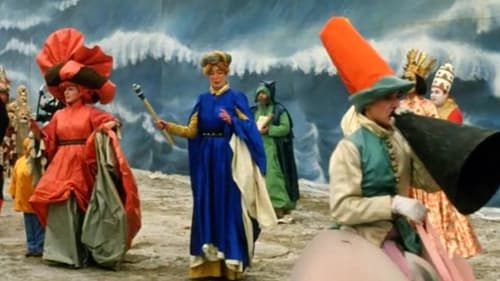
Director of Photography
Seven Women, Seven Sins (1986) represents a quintessential moment in film history. The women filmmakers invited to direct for the seven sins were amongst the world's most renown: Helke Sander (Gluttony), Bette Gordon (Greed), Maxi Cohen (Anger), Chantal Akerman (Sloth), Valie Export (Lust), Laurence Gavron (Envy), and Ulrike Ottinger (Pride). Each filmmaker had the liberty of choosing a sin to interpret as they wished. The final film reflected this diversity, including traditional narrative fiction, experimental video, a musical, a radical documentary, and was delivered in multiple formats from 16, super 16, video and 35mm.

Writer
Seven Women, Seven Sins (1986) represents a quintessential moment in film history. The women filmmakers invited to direct for the seven sins were amongst the world's most renown: Helke Sander (Gluttony), Bette Gordon (Greed), Maxi Cohen (Anger), Chantal Akerman (Sloth), Valie Export (Lust), Laurence Gavron (Envy), and Ulrike Ottinger (Pride). Each filmmaker had the liberty of choosing a sin to interpret as they wished. The final film reflected this diversity, including traditional narrative fiction, experimental video, a musical, a radical documentary, and was delivered in multiple formats from 16, super 16, video and 35mm.

Director
Seven Women, Seven Sins (1986) represents a quintessential moment in film history. The women filmmakers invited to direct for the seven sins were amongst the world's most renown: Helke Sander (Gluttony), Bette Gordon (Greed), Maxi Cohen (Anger), Chantal Akerman (Sloth), Valie Export (Lust), Laurence Gavron (Envy), and Ulrike Ottinger (Pride). Each filmmaker had the liberty of choosing a sin to interpret as they wished. The final film reflected this diversity, including traditional narrative fiction, experimental video, a musical, a radical documentary, and was delivered in multiple formats from 16, super 16, video and 35mm.

Director
China marks the beginning of the extensive Asian theme in Ottinger’s filmography and is her first travelogue. Her observant eye is interested in anything from Sichuan opera and the Beijing Film Studio to the production of candy and sounds of bicycle bells.
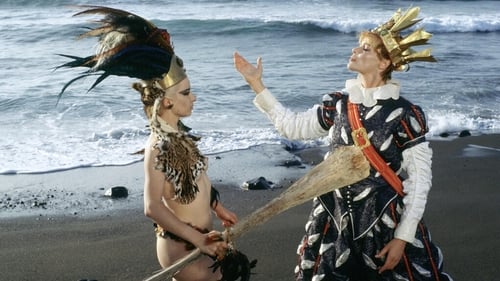
Production Design
Our organization will create a human being whom we can shape and manipulate according to our needs. Dorian Gray: young, rich and handsome. We will make him, seduce him and break him. Ulrike Ottinger, 1984

Screenplay
Our organization will create a human being whom we can shape and manipulate according to our needs. Dorian Gray: young, rich and handsome. We will make him, seduce him and break him. Ulrike Ottinger, 1984

Director of Photography
Our organization will create a human being whom we can shape and manipulate according to our needs. Dorian Gray: young, rich and handsome. We will make him, seduce him and break him. Ulrike Ottinger, 1984

Director
Our organization will create a human being whom we can shape and manipulate according to our needs. Dorian Gray: young, rich and handsome. We will make him, seduce him and break him. Ulrike Ottinger, 1984

Self
Barbara Hammer’s Audience is a fascinating deep cut from the director’s prodigious filmography. Relatively raw in its design, this 16mm diary of audience reactions at retrospectives of Hammer’s work in San Francisco, London, Toronto, and Montreal in the early 1980s bears none of the distinctive visual flourishes and essayistic form one usually finds in her filmmaking. Today, Audience serves as an invaluable historical archive, providing quick but complex portraits of lesbian scenes in different cities and countries: the San Francisco women are bold and raucous, treating Hammer like a celebrity; the London crowd more reserved and tentative; the Canadians politely critical after initial hesitation. It also functions as a testament to the power of Hammer herself as a figure of lesbian culture, showing how fully she engages audiences to incite new forms of discourse about representation.

N°104
Reel 11 of Gérard Courant's on-going Cinematon series.
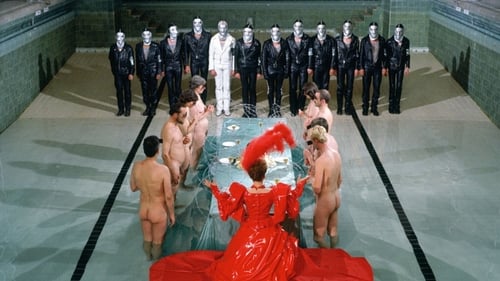
Director of Photography
FREAK ORLANDO is divided into five more-or-less distinct sections, all featuring "Freak" Orlando, a woman, played by the late Magdalena Montezuma, who appears in various guises, and deformities, throughout.

Production Design
FREAK ORLANDO is divided into five more-or-less distinct sections, all featuring "Freak" Orlando, a woman, played by the late Magdalena Montezuma, who appears in various guises, and deformities, throughout.

Writer
FREAK ORLANDO is divided into five more-or-less distinct sections, all featuring "Freak" Orlando, a woman, played by the late Magdalena Montezuma, who appears in various guises, and deformities, throughout.

Director
FREAK ORLANDO is divided into five more-or-less distinct sections, all featuring "Freak" Orlando, a woman, played by the late Magdalena Montezuma, who appears in various guises, and deformities, throughout.
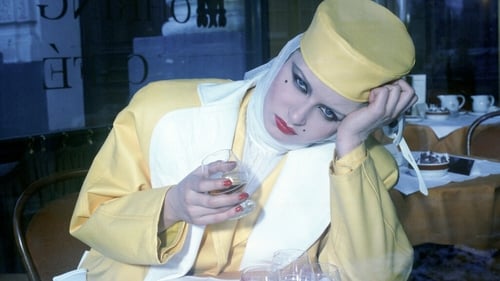
Narrator
A sartorially resplendent woman of few words arrives in Berlin with plans to live out the rest of her days as a drunkard.

Director
A sartorially resplendent woman of few words arrives in Berlin with plans to live out the rest of her days as a drunkard.

Director of Photography
A sartorially resplendent woman of few words arrives in Berlin with plans to live out the rest of her days as a drunkard.

Screenplay
A sartorially resplendent woman of few words arrives in Berlin with plans to live out the rest of her days as a drunkard.

Producer
A sartorially resplendent woman of few words arrives in Berlin with plans to live out the rest of her days as a drunkard.
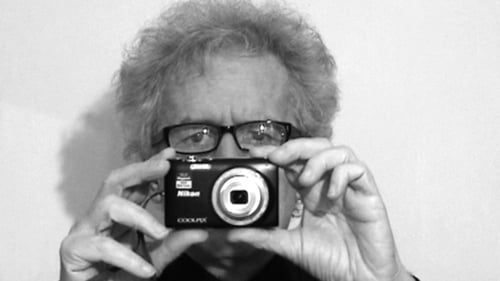
N°104
Cinématon is a 156-hour long experimental film by French director Gérard Courant. It was the longest film ever released until 2011. Composed over 36 years from 1978 until 2006, it consists of a series of over 2,821 silent vignettes (cinématons), each 3 minutes and 25 seconds long, of various celebrities, artists, journalists and friends of the director, each doing whatever they want for the allotted time. Subjects of the film include directors Barbet Schroeder, Nagisa Oshima, Volker Schlöndorff, Ken Loach, Benjamin Cuq, Youssef Chahine, Wim Wenders, Joseph Losey, Jean-Luc Godard, Samuel Fuller and Terry Gilliam, chess grandmaster Joël Lautier, and actors Roberto Benigni, Stéphane Audran, Julie Delpy and Lesley Chatterley. Gilliam is featured eating a 100-franc note, while Fuller smokes a cigar. Courant's favourite subject was a 7-month-old baby. The film was screened in its then-entirety in Avignon in November 2009 and was screened in Redondo Beach, CA on April 9, 2010.

Director of Photography
The notorious pirate ruler Madame X places a print ad, calling on women to escape their boring lives and promising "gold, love and adventure" to all who come aboard her ship, the Orlando. A motley crew including a housewife, diva and artist (played by Yvonne Rainer) embark on a quest for self-transformation, which quickly heads towards destruction as they are subjected to Madame X's sadistic, erotic escapades.

Orlando
The notorious pirate ruler Madame X places a print ad, calling on women to escape their boring lives and promising "gold, love and adventure" to all who come aboard her ship, the Orlando. A motley crew including a housewife, diva and artist (played by Yvonne Rainer) embark on a quest for self-transformation, which quickly heads towards destruction as they are subjected to Madame X's sadistic, erotic escapades.

Writer
The notorious pirate ruler Madame X places a print ad, calling on women to escape their boring lives and promising "gold, love and adventure" to all who come aboard her ship, the Orlando. A motley crew including a housewife, diva and artist (played by Yvonne Rainer) embark on a quest for self-transformation, which quickly heads towards destruction as they are subjected to Madame X's sadistic, erotic escapades.

Director
The notorious pirate ruler Madame X places a print ad, calling on women to escape their boring lives and promising "gold, love and adventure" to all who come aboard her ship, the Orlando. A motley crew including a housewife, diva and artist (played by Yvonne Rainer) embark on a quest for self-transformation, which quickly heads towards destruction as they are subjected to Madame X's sadistic, erotic escapades.

Director
In collage sequences, the surrogate of synthetic sensuality takes form and seduces the sailors in the guise of a Hawaiian girl. In ritual punctuation, she distributes deaths which seemingly only the hardy siren Fatality can survive.

Kakalia Katzen
Ottinger’s debut film already contains many of the elements that would appear in her later works: an extraordinary woman, an unusual country, and a chain of magic transformations that give rise to eccentric characterizations by an ensemble cast, here featuring Tabea Blumenschein in multiple roles. Inspired by Virginia Woolf’s Orlando, Ottinger’s allegorical work explores themes of death, destruction, and resurrection. With striking camerawork reminiscent of the antics of avant-garde psychodramas, Laocoon & Sons is filled with an exuberant sense of life, myth, tradition, and magic.

Director
Ottinger’s debut film already contains many of the elements that would appear in her later works: an extraordinary woman, an unusual country, and a chain of magic transformations that give rise to eccentric characterizations by an ensemble cast, here featuring Tabea Blumenschein in multiple roles. Inspired by Virginia Woolf’s Orlando, Ottinger’s allegorical work explores themes of death, destruction, and resurrection. With striking camerawork reminiscent of the antics of avant-garde psychodramas, Laocoon & Sons is filled with an exuberant sense of life, myth, tradition, and magic.

Director
In 1973, Wolf Vostell, an artist associated with Fluxus, made a happening in which participants were required to perform a series of ritual, obsessive actions, such as “go to the trunk of your vehicle, there open and close the trunk 750 times and 375 times put a white plate in it and take it out 375 times.” Described by Ottinger as a documentation of what Vostell called “dé-coll/age-happening”, the film is an illustration of her creative method, a surrealist act, a separate work of art, and a strange object. She would later describe her method as “fragments of reality assembled in an unusual manner”.




































































